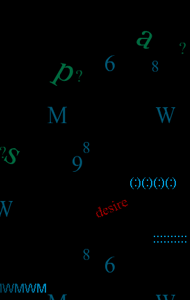|
|
Date: 2001
Project Type: Narrative


Exercise for Jim Andrews'
Arteroids
Description
Arteroids is a game in which the player's task is to cut up, blow apart, and disassemble poetry. In the game, these actions are metaphors for what the artist describes as "the battle of poetry against itself and the forces of dullness." Breaking up sentences is a popular technique in poetry, and often used to critique existing language suggest new meanings.
Purpose
This exercise will introduce students to certain poetic techniques, and show how these can be visualized and dramatized, digitally.
Instructions/Notes
This lesson revolves around poetry. Educator should prepare for the class by selecting one autobiographical poem that can be used as an example.
Exercise
Warm-Up Activity (5 min): The educator should assign various students to read excerpted passages aloud from selected poetry. Passages should be prewritten on pieces of paper in large lettering. After the reading, the educator should guide students through a basic explanation of the poems' themes (for both suggested poems, themes should be enumerated). Then in small groups, students should be assigned to cut up and reorganize the words. Suggested questions could include:
- What kind of new sentences or poems can the students make out of the words?
- Can they change the meaning of the original poem? What words pop out?
Play (10 min):Breaking up into small groups, students should play Arteroids, taking turns as the player (assuming there are a limited number of monitors).
Follow-Up Exercise (5 min): Gathering back into a large group, the educator should lead a discussion about the piece. Suggested questions could include:
- Did the students enjoy the game?
- How do the actions and graphics compare to commercial games? (Educators can assume students will find the game simple, if they are used to commercial video games.) The educator should discuss Arteroids as a piece of art by evaluating the expressive power of the cut-up.
Other questions can include:
- What is the artist trying to say?
- Do you think that poetry receives attention?
- Does poetry deserve attention?
- What is the larger benefit of poetry in relation to other kinds of fiction or non-fiction writing?
Activity (10 min): In remaining class time, students should work by themselves on a poem. The assignment should be to write a poem inspired by the themes of the poems read in the Warm-Up Exercise. For instance, "Song of Myself" could involve students writing about their selves and their passions. The educator should emphasize that poems can come in any form, as simple paragraphs or in lines like in Hughes' and Whitman's poems.
|






